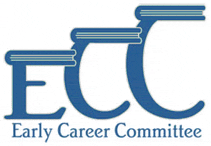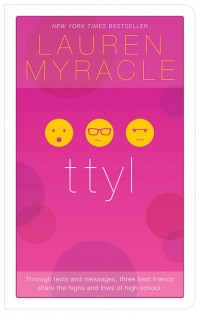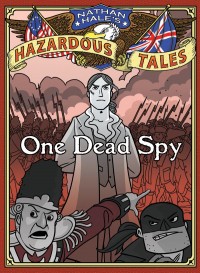What was your first job in publishing?
This is my first job in trade publishing! But I was a copy editor and an assistant news editor at the Philadelphia Inquirer for five years and a copy editor in educational publishing at Weekly Reader for about two before coming here. Doing freelance work on LBYR books is what led me here.
What do you like about working on children’s books?
What’s not to love? I feel very lucky because I get to work on some pretty amazing books by terrific authors! I’ve been a voracious reader since I was very young, so I like thinking that the books I work on will bring joy to kids out there now.
How long have you worked with LBYR? How has your job changed?
I’ve been with LBYR for almost four years. The number of titles I’m responsible for has definitely grown, and as I gain more experience, I’ve had opportunities to handle more high-profile projects. In addition, I spend a greater part of my workweek on ebooks, performing quality assurance on our files and attending committee meetings on our ever-evolving procedures.
What was the first manuscript you worked on?
Ooh…this is a tough question to answer without looking back in my files! I believe one of the first manuscripts I worked on was Smells Like Treasure, by Suzanne Selfors, one of my favorite authors. I love her Smells Like Dog series. There was one scene in that book that had me actually laughing out loud. It involves a skydiving basset hound. How can you not laugh at that?
Can you describe your typical day?
My days vary depending on what stage my projects are in. Today, for instance, I saw cover mechanicals for a couple of licensing titles first thing in the morning. Then I looked at a photo insert for a middle grade nonfiction book. I reviewed two ebook files, then a set of blues for a young adult novel. In the afternoon, I looked at sketches for a picture book and sent a copyedited manuscript to Design. After an ebook committee meeting, I started styling a manuscript I’d received from Editorial to prepare it for copyediting. On other days, I might also attend a print or ebook production meeting, review a manuscript or a set of proofs back from a freelancer, or work on paperback conversions. It never gets boring around here.
What’s the best piece of advice you ever received?
In high school, I learned that keeping to-do lists was very helpful in staying organized. And now I love making to-do lists. They help me keep track of what needs to be done and by when. (I also love the satisfaction of crossing things off!)
What skills do you think are indispensable for working in your department?
It helps to be a good copy editor, so knowledge of all those grammar and punctuation rules you learned in middle school comes in handy. Production editors should also be organized; we have tons of due dates to keep track of. And familiarity with The Chicago Manual of Style and Merriam-Webster’s Collegiate Dictionary is a must.
What was one of the worst mistakes you’ve made (or any mistake)? How did you get beyond it?
Back in my newspaper days, I once called Rio de Janeiro the capital of Brazil in a headline. It made it into the paper, and we had to run a correction the next day, and corrections are never a good thing to have on your record, especially as a copy editor. I will now never forget the real capital of Brazil (Brasília). I felt stupid about it for a while, but it reminded me of the importance of verifying things, even if you swear they’re right. A quick check in the dictionary would have saved me from the error.
What is your favorite word?
Can I tell you my least favorite word? Singsong. Does it mean “melodic”? Or “monotonous”? I can’t really tell looking at Merriam-Webster‘s, and you’d be surprised by how many times the word comes up in manuscripts.
Biggest grammar pet peeve?
I don’t really have any grammar pet peeves. I mean, I will query incorrect things, such as when who should be whom, or when a subjunctive should be used. But in fiction, the author’s voice is very important, and sometimes the “correct” way just doesn’t sound right. When was the last time you heard a teen say “whom”? I’ll bring up these issues, but if the author wants to stet something, I’m usually perfectly okay with doing what he or she prefers. The important thing is to raise the question.
What was your favorite book as a child?
I remember being slightly obsessed with the Mrs. Piggle-Wiggle books as a kid. I think it was actually my first box set!
What is your favorite industry or copyediting blog?
Grammar Girl: Quick and Dirty Tips.
What are you reading? Or what was the last book you really loved?
I have a ton of books I want to read, but I can’t remember the last time I read a book not for work, whether it was an LBYR title or one of my freelance projects. I love reading books that explore parts of my heritage. Growing up, I rarely found book characters or topics that I felt I could identify with. I’m happy that more middle grade and young adult books are embracing diversity. The last book I read that I really loved was Ryan Graudin’s upcoming The Walled City. It is SO GOOD (and I rarely use all caps!). Another, from a few seasons ago, was Sugar, by Jewell Parker Rhodes. Both are about events in Asian history that I never knew happened!
Recent years have seen a rise in picture-book biographies. Were your life ever to be chronicled in such a way, and don’t be modest now, who would you choose to illustrate it?
Eliza Wheeler. The first time I saw her art for Wherever You Go, I was blown away by how beautiful and lively her pieces were. Can she draw me and all my friends and family as animals? That would make my life seem significantly more fun and interesting!










